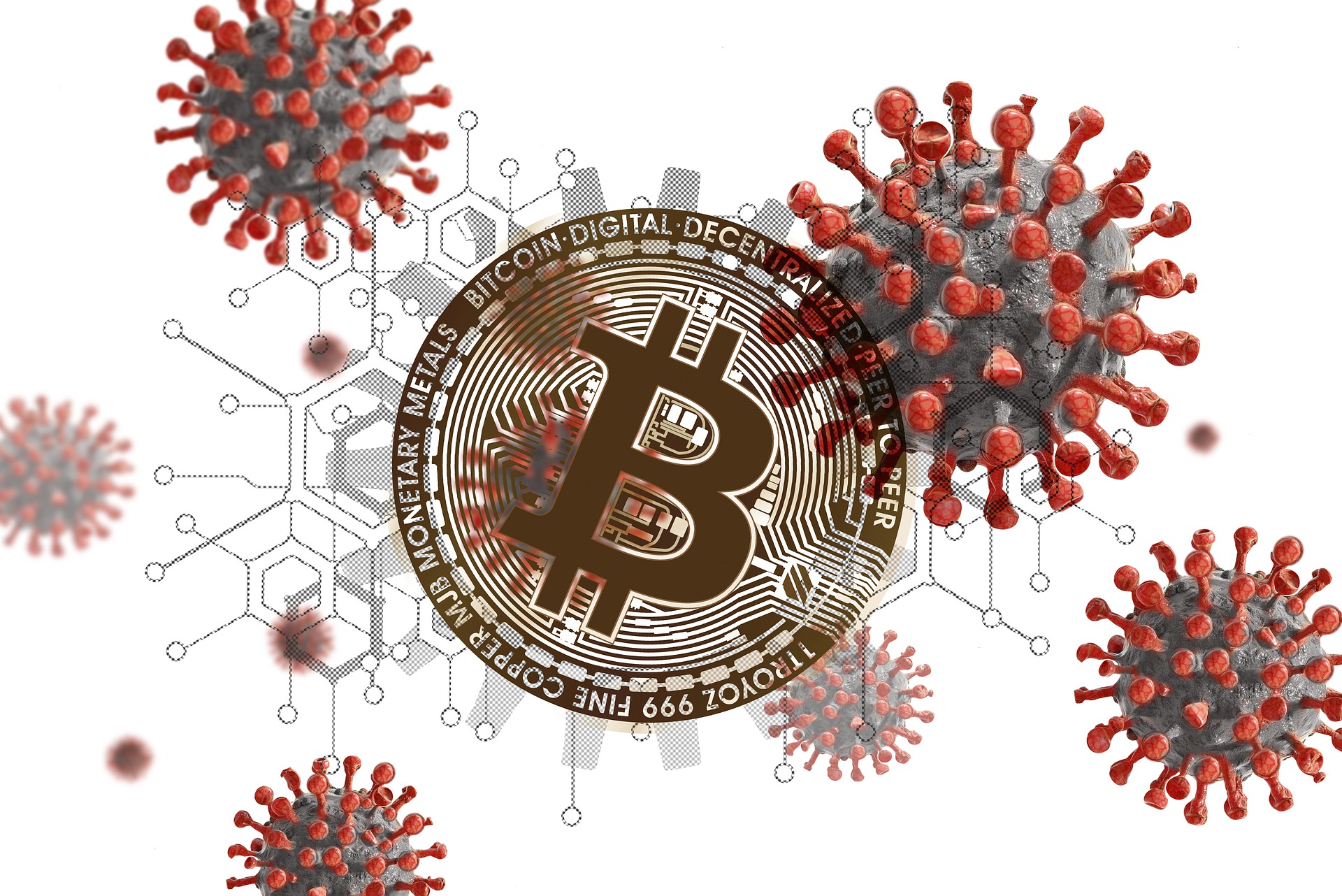In the global economy, supply chains play an important role during Covid-19 in India 2022

In the global economy, supply chains play a significant role during Covid-19 in India 2022
Unlocking New Products and Markets with Financial Instruments as Code – The blockchain revolution has ushered in a period of unprecedented change in the financial sector. With a special connection and programmability across goods, services, assets, and holdings, digital financial instruments are being curated from digital assets, smart contracts, and programmable money.
Financial institutions that use blockchain technology will be able to reach underserved markets while also reducing operating expenses associated with traditional international payment gateways. Capital Markets, Asset Management, Digital Payments, and Insurance are some of the most popular blockchain use cases in financial services.
So, why do companies choose new technology when it comes to recalibrating the value chain? Is it restricted to the ability to adapt to change, generate a degree of centralization, or enhance the customer experience? Suppose we apply the notion of “modularity” to Hybrid Cloud. In that case, each adoption step makes you feature-rich by being native and cohesive throughout the ecosystem and creating a synergized trust-based collective, “we” between conventional and current.
Understanding FIaC

Financial Instruments as Code [FIaC] is a current transaction banking language that makes explicit associations between business operations and growing technology and market players. As a result, “new products” are created and delivered to existing and new markets. FIaC is a collection of technology-enabled high-value business packages that may help marketplace participants build new shared income models.
Internal and third-party services are bundled into platform corporations’ own packaged solutions for their existing client base. By delivering packaged services that eliminate friction for both the user and the ecosystem, ecosystem providers amass data and develop a more significant, more stable income source.
Fundraising, Credit & Loans, Trade Finance, Digital Identification Verification, Accounting & Auditing, Hedge Funds, and P2P Transfers are covered by FIaC. It does so by removing geographical boundaries imposed by data privacy laws and combining transactions into a single digital identity that is updated in real-time and accessible to all network participants.
Consumers will only need to register their identity once on the blockchain network to add and retrieve transaction receipts stored in a shared register.
Zero-Knowledge Proof [ZKP] is the most famous invention in this field, with various governments and influential organizations working on solutions based on it. FIaC includes a digital notary, automatic payment of bills, real-time transaction acknowledgement, secure loan processing, a single digital identify, and dependable and secure international expenses, among other features.
Cryptocurrencies are one of the foundations of FIaC, a vehicle with significant potential to outperform traditional banking products while providing higher efficiency, less bureaucracy, and more transparency.
The cryptocurrency-based financial instrument system

According to the Office of the Comptroller of the Currency (OCC), banks and savings organizations might provide crypto custody services to consumers, including maintaining unique cryptographic keys for accessing private wallets. Banks are now offering interest-bearing crypto accounts, via which users may invest crypto on the back end or through other financial instruments and then use it to trade FIaC goods.
Public blockchains, such as Stablecoins, are being used by banks to speed up payment procedures for FIaC goods. Banks are / should strengthen trust in Smart Contracts by establishing themselves as a responsible third party for mortgages, commercial loans, letters of credit, and other transactions. FinCEN (Financial Crimes Enforcement Network) concluded in 2019 that any cryptocurrency transactions and custodial services must still comply with AML/KYC standards. Blockchain technology is now automating AML and KYC verifications and is at various maturity degrees.
Regulatory organizations are worried that not all cryptocurrency transactions are recorded for AML and KYC purposes, leading to criminal activities and network frauds. Governments all across the globe don’t want decentralized currencies that aren’t under their control, and many countries consider them a danger to their coins. Cryptocurrency acceptance and usage continue to evolve via the regulatory lenses of countries. Some governments are pursuing the development of their own National Crypto, which will serve as a medium of scale FIaC product.
In the global economy, supply chains play a significant role in India

The world’s image of India and its potential has evolved in the recent decade, and our country is becoming a model of economic growth for the rest of the globe. On a worldwide scale, India is seen as a critical player in the global supply chain, presenting itself as a desirable location for multinational enterprises. The world is looking forward to India’s unwavering and constant efforts to transform the country into a global leader through its numerous programs.
The Impact of Covid-19 on the Global Supply Chain
In recent years, Covid-19 has had a considerable impact on the logistics business, and because it is one of the most critical sectors that serve other industries, recovery has been slow. The McKinsey Global Institute estimates that India’s logistics sector will develop at a compound annual growth rate of more than 10%, from $200 billion in early 2020 to at least $320 billion by 2025.
Even though the logistics industry is continually evolving, the future is currently more uncertain than when MGI issued that forecast because of the ongoing Covid-19 assaults across various sectors. The outbreak created substantial disruptions in India’s consumer-driven and unstructured logistics industry. It is, nevertheless, on the mend and attempting to reclaim its former glory.
The Impact of Covid-19 on the Indian Supply Chain Industry

However, during the Covid-19 epidemic, India became the preferred destination. This was achievable by clearly defined global corporate and country objectives for reducing supply chain risks over time and repairing damaged value networks in the short term.
Supply chain failures significantly impacted businesses that relied on imported commodities. The tried-and-true methods were no longer viable. The entire process was thought to need to be changed, adjusted, and modified. The whole process was supposed to need to be changed, altered, and altered.
India’s Position in the Supply Chain Industry

India became the preferred business destination during and after the Covid-19 outbreak due to its short response time. India was an alternate possibility to fill the distribution network and enormous domestic market with rising disposable incomes as enterprises worked to rebuild their broken value chains under challenging times and decrease long-term supply chain risks.
These factors are paired with the relative vacuum since it is a stable country with secure investment opportunities. The country’s claim is bolstered by its diversified business environment; competent, low-cost labour readily available on the market will also help it establish itself as an international economic centre.
India may gain from a more robust legislative structure for SEZs (Special Economic Zones) with duty-free imports if it creates a parallel environment for industrial development and joins global supply chains. SEZs have positively influenced IT-related activities, although they have had a minor impact on manufacturing. One of the leading causes appears to be that SEZ construction was delegated to the private sector, and they mainly were too tiny to compete in global markets.
The SEZ’s value as an investment destination will be boosted by expressway connectivity to the National Highway network, ports, and airlines. Such large-scale initiatives should be able to get long-term funding from the new DFI (Development Financial Institution).
Low-cost electricity, shared effluent treatment centres, talent development centres, worldwide testing centres, and certification facilities would be needed. The most significant change would be to enable sales of SEZ-produced products to the domestic market, with tariffs on imports from all trading partners levied at the lowest specified rate and any trade agreement’s value-added criteria.
Summing Up
Financial Instruments as Code will increase value chain co-creation by combining internal and third-party services into packaged marketplace products, also a derivation of Open Finance. Real-time payments and Trade Finance will be the pinnacle of FIaC in Embedded Finance, benefiting both banks and non-banks.
Although Embedded Finance is the future of fintech, there are now several magnetic products on the market based on Embedded Finance’s ideas. FIaC will shape embedded Finance with a more engaging experience via IoT models, and that will be something to keep an eye on. Due to its solid macroeconomic fundamentals, significant demographic dividend enhanced ease of doing business (EoDB), and availability of resources for growing industrial facilities, India may offer itself an interesting investment site for investors globally.
The government, local governments, and corporations would all have to work together to actualize this potential. According to the government, India is on its path to joining the worldwide supply chain. If the prospective chances are recognized, and a well-thought-out plan of action is established and implemented effectively, the company will be launched forward, with more development following.




